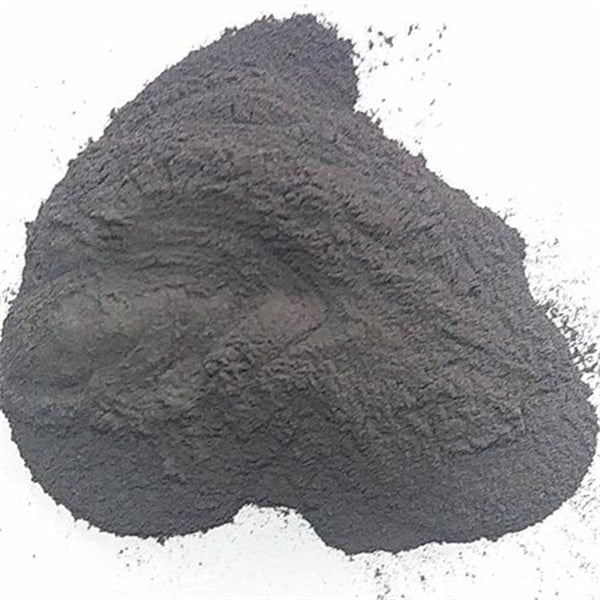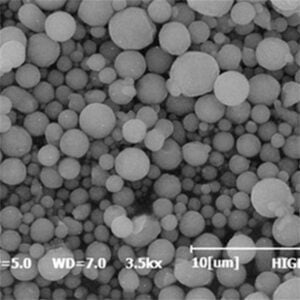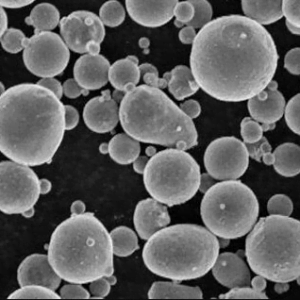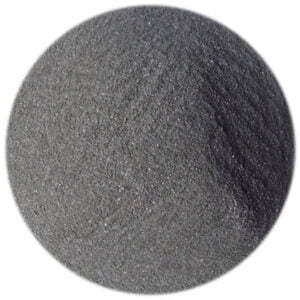Nickel Oxide Powder
Table of Contents
Nickel oxide powder is an incredibly useful material with applications across industries like electronics, energy storage, sensors, catalysis, and more. This article provides a comprehensive overview of nickel oxide powder, its key characteristics, manufacturing processes, and wide-ranging uses.
Overview of Nickel Oxide Powder
Nickel oxide, also known as bunsenite, is an inorganic compound with the chemical formula NiO. It is usually a green-black or black solid material. Some key features of nickel oxide powder include:
Nickel Oxide Powder Key Properties
| Properties | Details |
|---|---|
| Chemical Formula | NiO |
| Color | Green-black or black |
| Density | 6.67 g/cm3 |
| Melting Point | 1955°C |
| Toxicity | Low to moderate toxicity |
Nickel oxide is produced by heating nickel minerals and compounds like nickel hydroxide or nickel carbonate in air. The powder can be manufactured in various grades with particles sized from nanoscale to microscale for specialized applications.
It exhibits useful electrical, optical, magnetic, and electrochemical properties. For instance, nickel oxide transitions from a semiconductor to a metallic conductor at high temperatures. It also displays multiple oxidation states allowing unique chemical reactions.
These special characteristics make nickel oxide suitable for a very wide range of uses today. Let’s examine some of the major applications taking advantage of this versatile material.

Applications of Nickel Oxide Powder
Nickel oxide has become an extremely important industrial material utilized in many cutting-edge technologies. Here are some of the major uses of nickel oxide powder across industries:
Major Applications of Nickel Oxide Powder
| Industry | Applications |
|---|---|
| Electronics | Resistors, transistors, diodes, sensors, piezoelectrics |
| Energy Storage | Battery electrodes, supercapacitors |
| Catalysis | Reforming, hydrotreating, detoxification catalysts |
| Ceramics | Coloring agent, conductive composite filler |
| Glass | Coloring, electrochromic coatings, conductive coatings |
As you can see, nickel oxide has highly diversified uses today meeting critical needs in electronics, energy, manufacturing, and more. Let’s go through some of these application areas in greater detail.
Electronics Applications
Nickel oxide is a versatile functional material for multiple electronic components including:
- Resistors: Changing resistance with temperature makes nickel oxide suitable for precision resistors. Special NiO resistors support high power handling for electrical circuits.
- Transistors and diodes: Nickel oxide films can create junctions with unique electrical properties for advanced power electronics.
- Piezoelectrics: Due to strong electrochemical activity, nickel oxide enhances performance of piezoelectric crystals used in sensors and transducers.
- Gas sensors: Sensitivity to gases like carbon monoxide, ammonia and nitrogen oxides allows NiO sensor applications detecting toxic gases.
- Thermistors: Large change in conductivity with temperature facilitates precise thermal sensing using nickel oxide.
With excellent stability and tailored electrical features, nickel oxide empowers state-of-the-art electronics meeting needs across industries.
Energy Storage Applications
Nickel oxide is also gaining traction in advanced energy storage devices including batteries and supercapacitors:
- Battery Electrodes: Mixed with graphite or graphene, nickel oxide can store and release large amounts of charge as battery anode material with stable cycling performance.
- Supercapacitors: Ultra-high surface area nickel oxide electrodes display enhanced capacitance for integrated supercapacitors powering electronics.
- Water Splitting: Using sunlight, nickel oxide catalysts can split water into hydrogen and oxygen to produce clean fuel very efficiently.
By enabling high-performance batteries, supercapacitors and renewable fuels, nickel oxide is playing a key role in sustainable energy technologies.
Catalyst Applications
Nickel oxide is an active catalyst for important chemical reactions like reforming, hydrotreating, detoxifying and more:
- Reforming catalyst: Converting hydrocarbons into synthesis gas for fuels and chemicals.
- Hydrotreating catalyst: Removing sulfur and nitrogen impurities from petroleum fractions to make cleaner fuels.
- Detoxification catalyst: Destroying hazardous substances in industrial and vehicle emissions to curb pollution.
- Ammonia synthesis catalyst: Producing ammonia fertilizers from air, water and renewable energy sources.
With outstanding catalytic activity under high temperatures, nickel oxide drives crucial processes for fuels, chemicals, environmental remediation and other needs.
Ceramics Industry Applications
- Coloring agent: Nickel oxide produces unique green, blue, yellow colors in glazes and glass.
- Conductive composites: Added to ceramics and polymers, nickel oxide makes conductive plastics for electronics, coatings for glass.
- SOFCs: Solid oxide fuel cells use nickel oxide electrodes allowing hydrocarbon fuels for high efficiency power.
Nickel oxide is an essential material to develop advanced ceramics, glass, composites across industries.
As seen above, nickel oxide has become a vital engineered material enabling emerging technologies through unique electrical, optical, chemical and mechanical properties. Let’s take a look at some typical grades and specifications of nickel oxide powder.
Types and Specifications of Nickel Oxide Powder
Nickel oxide powder is commercially available from specialty chemical suppliers in various compositions and particle sizes tailored to end-use requirements:
Common Grades of Nickel Oxide Powder
| Grade | Purity | Particle Size | Color | Bulk Density | Surface area |
|---|---|---|---|---|---|
| Technical | 95-98% NiO | 1-5 microns | Green-black | 2-4 g/cm3 | 1-10 m2/g |
| Battery | 99% NiO | 100-500 nm | Black | 0.2-0.5 g/cm3 | 15-30 m2/g |
| Electronic | 99.9% NiO | 50-100 nm | Black | Low | 20-60 m2/g |
| Ceramic | 99-99.5% NiO | 0.5-2 microns | Black or colored | 4-6 g/cm3 | 5-15 m2/g |
- Technical grade nickel oxide meets general industrial requirements for coloring, electrical, magnetic, optical and catalyic behavior with 95-98% purity.
- Battery grade extra pure nano-sized particles optimize performance of battery electrodes and supercapacitors.
- Electronic grade ultra-high purity nano powder produces precision resistors, sensors and transistors.
- Ceramic grade optimized particles provide consistent functional properties and aesthetics.
Additionally, nickel oxide must meet various quality standards for safe handling and performance:
Nickel Oxide Powder Specifications
| Parameter | Typical Values | Test standards |
|---|---|---|
| Nickel oxide assay | 95-99.9% | ASTM D5381 |
| Loss on drying | <2% | ASTM D2809 |
| Water soluble matter | <1% | ASTM D2809 |
| Particle size distribution | Industry-grade | ISO 13318 |
| Tap density | 2-6 g/cm3 | ASTM B527 |
| Heavy metals (Pb) | <20 ppm | EPA 3050B/6010B |
With excellent quality control during manufacturing, leading global suppliers provide nickel oxide powder meeting regulatory standards and customer needs.
Now let’s examine some typical pricing for nickel oxide to understand cost factors.
Nickel Oxide Powder Pricing
Nickel oxide powder prices vary based primarily on purity grades, particle sizes, regional demand and bulk quantities as shown below:
Nickel Oxide Powder Price Ranges
| Grade | Particle size | Price per kg | Price per ton |
|---|---|---|---|
| Technical | 1-5 microns | $15-25 | $15,000-25,000 |
| Battery | 100-500 nm | $50-80 | $50,000-80,000 |
| Electronic | 50-100 nm | $100-150 | $100,000-150,000 |
- Asia accounts for majority of production and lower prices due to high regional demand.
- Nano powder is far more expensive than micron sizes due to complex manufacturing.
- Battery and electronic grades with 99%+ purity have much higher pricing than 95-98% technical grade.
- Buying full truckloads allows negotiating lower per kg pricing due to savings on logistics.
In summary, purity, particle size, regional demand and order volumes drive nickel oxide powder prices. Contact leading global suppliers for rapid quotes.
Comparing Nickel Oxide Powder to Alternatives
Nickel oxide offers unique advantages over alternative materials in certain applications as shown below:
Nickel Oxide Powder Versus Alternatives
| Toxicity | Low | Very low | High | Medium |
|---|---|---|---|---|
| Catalytic activity | High | Low | Medium | Low |
| Temperature stability | Excellent | Good | Good | Medium |
| Cost | Medium | Low | Very high | High |
- Electrical conductivity: Nickel oxide has moderate conductivity allowing flexible use in resistors, sensors, battery electrodes. Iron/cobalt oxide have lower conductivity while copper oxide is more conductive.
- Toxicity: Nickel oxide has relatively low toxicity, especially compared to hazardous cobalt compounds. Iron oxide is safer while copper/cobalt oxides have higher toxicity.
- Catalytic activity: Excellent redox reactions make nickel oxide uniquely effective for reforming, ammonia production and other catalysis. Iron oxide has lower while cobalt oxide has comparable catalytic potential.
- Temperature stability: Nickel oxide retains properties up to 1955°C with outstanding thermal shock resistance, comparable to iron and cobalt oxides.
- Cost: Nickel oxide pricing is moderate in relation to alternatives. Iron oxide is the most affordable option. Cobalt oxide costs 5-10x more owing to very limited global reserves for this critical mineral.
In applications such as battery electrodes, catalysts, and sensors, nickel oxide often provides the optimal balance of functional properties, temperature resilience, safety and cost. Contact vendors to choose the right material for your specific requirements.
Buying Nickel Oxide Powder
Reputed manufacturers and suppliers offer high-quality nickel oxide powder for industrial use. Here are top global providers:
Top Nickel Oxide Powder Manufacturers/Suppliers
| Company | Location | Grades Available | Order Quantity | Delivery Time |
|---|---|---|---|---|
| Sigma Aldrich | US, Europe, Asia | Technical, high purity | Any | 1-4 weeks |
| American Elements | US | Battery, electronic | Bulk | 1-2 weeks |
| GFS Chemicals | US | Technical | Bulk | 1-2 weeks |
| Noah Chemicals | China | Battery, technical | Bulk | 4 weeks |
| Advanced Chemicals | India | Technical | Bulk | 4-6 weeks |
Buying nickel oxide powder depends on your region, requirements for grade, particle sizes, pricing, lead times, etc. Supplier capabilities also vary. Discuss your needs with distributors and get rapid quotes for your specific order.
For small lab orders, specialty chemical companies like Sigma Aldrich allow buying as low as 100g nickel oxide powder with premium quality and fast delivery times to enable testing and prototyping.
For large commercial orders over 5 tons, contact manufacturers directly for attractive pricing. However delivery takes 4-6 weeks by sea from typical production regions like China and India. Plan orders in advance for smooth production schedules.
In conclusion, nickel oxide powder is sparking tremendous innovation across industries due its versatility. With unique electrical, optical and chemical behaviors, nickel oxide empowers electronics, energy storage, catalysts and advanced material applications. Leading chemical companies have extensive capabilities producing high-performance nickel oxide reliably meeting global demand.

FAQ
Q: Is nickel oxide hazardous?
A: Nickel oxide has relatively low toxicity levels compared to other metal compounds. However dust inhalation must be minimized with protective gear as per OSHA standards. Proper handling, storage and disposal keeps exposure well below regulated limits for safety.
Q: What are the common substitutions for nickel oxide powder?
A: Iron oxide and copper oxide powders can potentially substitute nickel oxide in some electrical and ceramic applications but have variations in conductivity, color and temperature stability. Cobalt oxide is closest alternative for catalysis but with much higher toxicity.
Q: Does nickel oxide dissolve in water?
A: Nickel oxide has a very low solubility (1.3 mg/L at 20°C) in neutral water. Acidic solutions allow higher dissolution releasing Ni2+ ions that must be managed as per discharge norms.
Q: What are the options for shipping nickel oxide powder?
A: Nickel oxide is classified as an environmentally hazardous substance for air and sea freight under special provision A197, though exemptions up to 5kg are present. Reputable suppliers can advise compliant shipping procedures.
Q: Is nickel oxide flammable?
A: Nickel oxide is classified as an oxidizer and can intensify fire or explode when mixed with combustible substances. Fire protection measures as per NFPA codes must be followed for storage and handling.
Q: How to dispose nickel oxide safely?
A: Nickel oxide waste is considered hazardous requiring special disposal procedures under EPA regulations. Waste containers must be labeled with proper identification details and disposed via approved industrial waste collectors.
Share On
MET3DP Technology Co., LTD is a leading provider of additive manufacturing solutions headquartered in Qingdao, China. Our company specializes in 3D printing equipment and high-performance metal powders for industrial applications.
Inquiry to get best price and customized Solution for your business!
Related Articles
About Met3DP
Recent Update
Our Product
CONTACT US
Any questions? Send us message now! We’ll serve your request with a whole team after receiving your message.

Metal Powders for 3D Printing and Additive Manufacturing
COMPANY
PRODUCT
cONTACT INFO
- Qingdao City, Shandong, China
- [email protected]
- [email protected]
- +86 19116340731

















